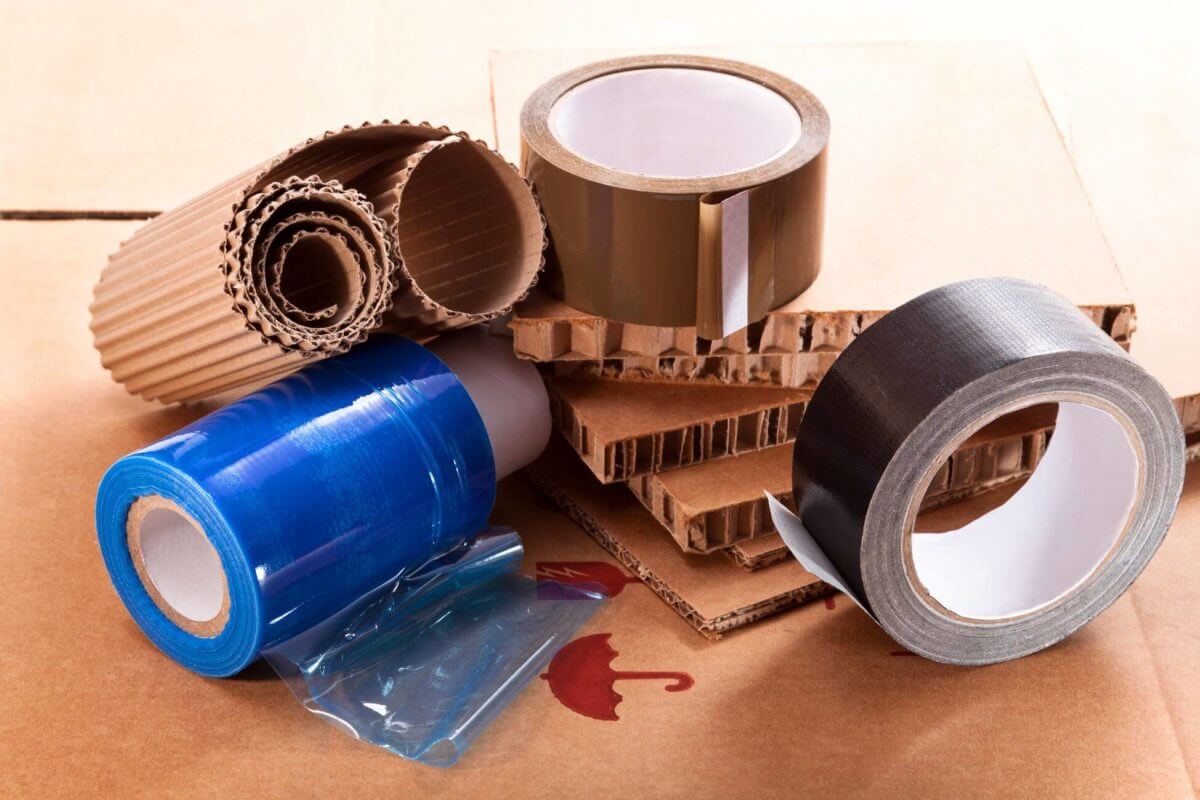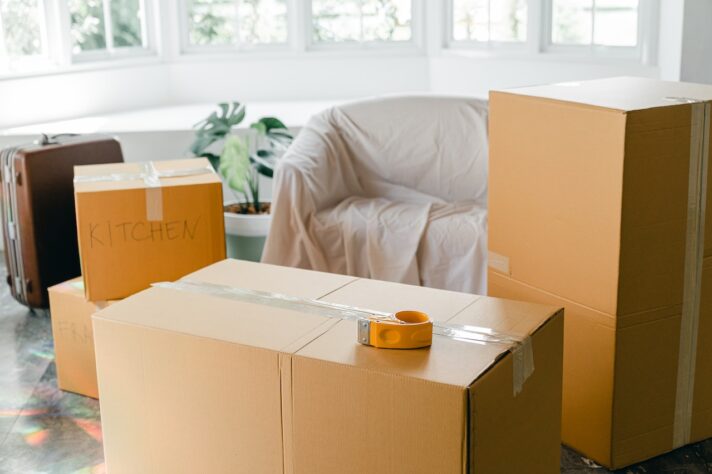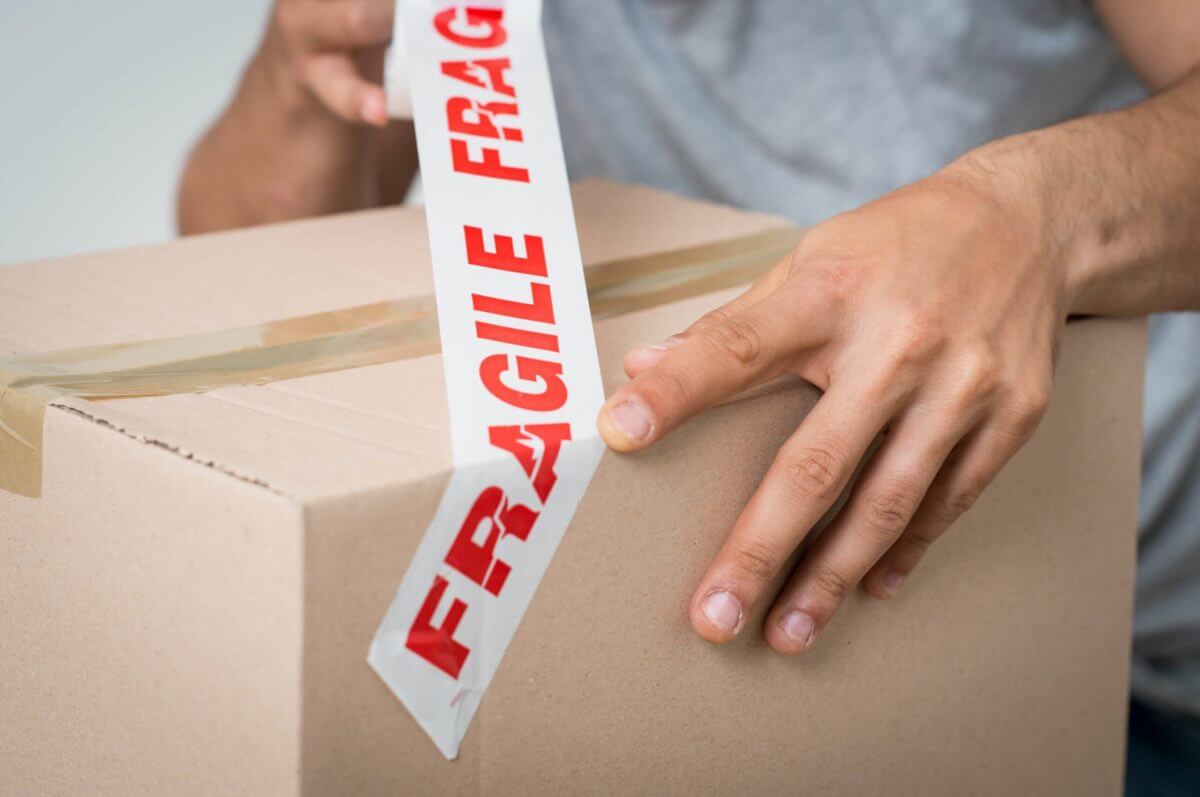When relocating cross country, ensuring that belongings arrive safely is a top priority. One crucial aspect of this process is properly taping boxes. The best way to tape boxes for moving involves using the right techniques to secure them. In this guide, we’ll explore the best methods to ensure that all items stay protected throughout the journey.
How to properly secure packages to ensure they remain shut during shipping? Why Is It Important to Learn the Best Way to Tape Boxes for Moving?
Properly taped packages for relocating to a new state provide structural integrity, preventing them from collapsing under weight or pressure in the relocation truck. This not only protects items but also facilitates a smoother shipping process. Let’s learn why boxes should be taped correctly for shipping with one of the cross-country moving companies.
Preventing Damage During Transit
When moving cross country, boxes will experience various movements, including bumps and vibrations. Proper taping helps to keep the box flaps secure and the contents intact, minimizing the risk of items shifting or spilling out.
Using strong, high-quality tapes and applying them correctly can create a solid seal that withstands the rigors of transportation. This ensures that even fragile items have a better chance of arriving at your future home unscathed.
Ensuring Boxes Stay Secure
A secure tape job reinforces the box’s structural integrity, making it easier to stack and handle. This is especially important when dealing with heavier boxes, as they are more prone to breaking open if not taped correctly. By focusing on secure taping, you enhance the overall stability and reliability of each packed box.
Reducing Relocation Stress
Reducing relocation stress is a key benefit of taping a box properly. A well-organized and secure wrapping process means fewer worries about the safety of belongings. When you know that all containers are securely taped, you can focus on other aspects of the move, such as coordinating logistics and settling into the new home. This peace of mind can make a significant difference in the overall experience, transforming a potentially chaotic process into a more manageable and efficient relocation.
Securing packages properly will allow you to enjoy a stress-free relocation Essential Tools for Taping Boxes
Having the right packaging materials is essential for a cross-country move. These tools not only make the taping process quicker but also ensure that cardboards are securely sealed, providing the necessary protection for belongings. By investing in quality tools, you can streamline the wrapping process and increase the overall efficiency of relocation.
Types of Packing Tape
Selecting the appropriate tapes is crucial for ensuring that moving boxes stay sealed during transit. You will likely need more than one roll. Apart from the regular duct tape you will surely purchase, here are some types we recommend having by your side:
- Acrylic tape – It’s ideal for long-term storage and is known for its strong adhesive and durability.
- Hot melt tape – It offers a stronger bond and is suitable for heavy-duty packages.
- Water-activated tape – It provides a tamper-evident seal, which is great for added security.
Tape Dispensers to Use
Using a dispenser can significantly speed up the wrapping process and ensure even application of tape. Handheld dispensers are convenient and easy to use, providing a consistent and tight seal. For larger packing tasks, consider using a desktop dispenser for greater stability and efficiency.
Additional Supplies You May Need
In addition to tapes and dispensers, other supplies can enhance the efficiency. Items like box cutters, permanent markers for labeling, and foam peanuts or bubble wrap for cushioning are essential. Having these additional supplies on hand ensures that you are well-prepared for any challenges, making the entire wrapping process more streamlined and effective.
To reinforce boxes correctly, you'll need more than one roll of tape Step-by-Step Guide to Taping Boxes Like a Professional Mover
Mastering the best way to secure a box is essential for a successful move. This step-by-step guide will help you shut boxes like a professional mover, ensuring a simple process with no anxiety about relocating.
Step 1 – Prepare the Box
Before taping, it’s important to prepare the box properly. Start by ensuring the box is in good condition, without any rips or tears. If using a used box, remove any old tape or labels. Next, fold the box flaps down and ensure they are aligned properly. If the box is not square, adjust the flaps until they sit evenly. This will make the taping process easier and ensure a more secure seal. Finally, place any packing materials, such as bubble wrap or packing paper, inside the box to cushion the items.
Step 2 – Apply the First Strip of Tape
Once the box is prepared and filled with items, you can start taping. Begin by applying the first strip to the center seam where the flaps meet, and apply it evenly along the seam. Make sure the tape extends at least a few inches past the edges of the box to provide a secure seal. Press down firmly on it to ensure it adheres properly, eliminating any air bubbles or gaps.
Step 3 – Reinforce the Sides and Bottom
To further secure the box, reinforce the sides and bottom with additional strips. Apply them along the edges where the flaps meet the sides of the box. For added strength, apply an extra strip of tape along the bottom seam, perpendicular to the first strip. This crisscross pattern helps to distribute weight evenly and prevents the box from splitting open. Repeat the process on the other side of the box if necessary, especially for heavier items.
Follow our steps for efficient wrapping of all packages Common Mistakes to Avoid When Securing Boxes for Shipping With Long-Distance Movers
Securing packages properly is crucial for a successful long-distance move. However, common relocation mistakes can compromise the integrity of boxes and the safety of belongings. Avoid these pitfalls to ensure a smoother and safer relocation.
Using an Insufficient Amount of Tape
One common mistake is insufficiently taping the packages. An insufficient amount of tape can lead to boxes coming apart during transit, risking damage to belongings in them. Always use enough tape to create a strong seal, ensuring the box flaps are securely fastened. Apply at least three strips along the seams and reinforce the bottom to handle the weight of the contents.
About 4.8 million Americans a year make interstate moves
Not Reinforcing Weak Points
Ignoring weak points in boxes is another error to avoid. Weak points, such as corners and edges, are more likely to tear or split open under pressure. Reinforce these areas by taping them additionally to provide strength. Pay special attention to the bottom of the box and any spots where the cardboard may be compromised.
Over-Taping and Wasting Materials
While it’s important to use enough tape, over-taping is also a mistake. Applying excessive tape can waste materials and make boxes difficult to open without damaging them. Over-taping can also create unnecessary bulk, making it harder to stack boxes neatly. Aim for a balanced approach by using sufficient tape to secure boxes without going overboard.
There are a few common mistakes you need to avoid when wrapping boxes Relocation Tips for Securing Different Types of Boxes
Securing various types of packages during a long-distance move requires different approaches. By understanding the unique needs of each box, you can ensure your belongings are well-protected and moved safely. Here are some relocation tips for specific wrapping situations you will surely encounter.
Taping Heavy Boxes
Heavy packages require extra attention when taping to prevent them from breaking open. Start by using high-quality tape and apply several layers along the bottom seam. Reinforce the corners and edges with additional strips to distribute the weight evenly.
When taping the top, ensure a secure seal by applying at least three strips along the center seam and the edges. This will keep the box intact and prevent it from bursting open under the weight of its contents. Before lifting a heavy box, be sure to learn about proper lifting techniques to avoid back injury.
Reinforcing Boxes With Fragile Items
Packages containing fragile items need additional reinforcement to protect their contents. Use plenty of materials, such as bubble wrap or packing paper, to cushion the items inside. Once packed, seal the box with multiple layers of tape along the seams. Reinforce the bottom and sides with extra strips of tape to provide added strength. Clearly label the box as “Fragile” to ensure careful handling during the move.
Handling Oddly Shaped Boxes
Oddly shaped packages can be challenging to secure. Start by filling any gaps inside the box with packing materials to prevent items from shifting. Use strong tape to seal all seams, applying extra layers where the box may be more prone to stress. For irregular edges, reinforce with additional strips to maintain the box’s shape and integrity.
Fragile items need to be properly labeled for shipping Additional Packing Tips for Cross-Country Moves
Packing for a relocation to a new city can be complicated, but with the right wrapping strategies, you can make the process smoother and more efficient. Here are some additional tips from our movers at Cross Country Moving Company to help you stay organized and ensure belongings arrive safely at your new home:
- Pack room by room – Focus on one room at a time to simplify the process, avoid feeling overwhelmed, and ensure each box is packed efficiently.
- Label boxes – Clearly mark each box with its contents and the room it belongs to, making it easier to unpack after relocating.
- Use high-quality packing materials – Invest in sturdy packages, strong tape, bubble wrap, and packaging paper to protect items during transit.
- Create an inventory list – Keep a detailed list of all packed items to track belongings and ensure nothing gets lost during shipping.
- Pack a first-night box – Include relocation essentials such as some clothes, toiletries, chargers, and medications to avoid digging through boxes on a first night in the new home.
Reach Out to Cross Country Moving Company for Top-Notch Long-Distance Moving Services
When planning a long-distance relocation, it’s crucial to choose a reliable and experienced long-distance moving company. Reach out to us at Cross Country Moving Company for top-notch cross-country moving services tailored to your needs. Our team of professional cross-country movers ensures your belongings are handled with care and moved safely.
From packing assistance and loading to transportation and unloading, we provide comprehensive solutions to make your move stress-free and efficient. Trust Cross Country Moving Company for a seamless relocation experience, and enjoy peace of mind knowing that the relocation is in expert hands. Contact us today and choose our cross-country moving service!















